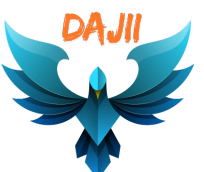Navigating the World of Disability Insurance
Disability insurance is a vital safety net that provides financial protection in the event of a disability that prevents an individual from working. Whether due to an accident, illness, or other health issues, the inability to earn an income can significantly impact one’s quality of life. Disability insurance ensures that individuals can maintain their financial stability while they recover or adapt to their new circumstances. In this article, we will explore the different types of disability insurance, how it works, and why it is essential in today’s world.
Types of Disability Insurance
There are two primary types of disability insurance: short-term and long-term disability insurance. Both provide income replacement, but they differ in terms of coverage duration and the types of situations they address.
1. Short-Term Disability Insurance
Short-term disability insurance offers coverage for a temporary period, typically ranging from a few weeks to several months. This type of insurance is designed for individuals who experience a temporary illness or injury and need time to recover but expect to return to work soon. Short-term disability usually replaces 60% to 80% of your salary during this period, depending on the policy.
2. Long-Term Disability Insurance
Long-term disability insurance provides coverage for more extended periods, often lasting several years or even until the individual reaches retirement age. It is intended for individuals who suffer from a serious illness or injury that makes it impossible to return to work for an extended period. The benefit amount is usually a percentage of your pre-disability income and may be subject to caps depending on your policy.
How Disability Insurance Works
Disability insurance works by providing a percentage of your income when you are unable to work due to illness or injury. To qualify for disability insurance benefits, you must meet certain criteria, such as providing medical documentation and proving that you are unable to perform the essential duties of your job.
There is often a waiting period (also called an elimination period) before the benefits begin. This waiting period can range from a few weeks for short-term disability insurance to several months for long-term disability insurance. After the waiting period is over, the insurance company will begin paying you a portion of your income, which can help you cover your living expenses and other financial obligations while you are unable to work.
Why Disability Insurance is Essential
1. Financial Security
A disability can occur at any time, and it often comes unexpectedly. Without disability insurance, you may have to rely on savings, family support, or social security benefits, which may not be enough to cover your living expenses. Disability insurance helps you maintain your financial stability by replacing a portion of your income, allowing you to focus on recovery without the stress of worrying about money.
2. Protecting Your Family
If you are the primary breadwinner in your household, a disability can have a significant impact on your family’s financial well-being. Disability insurance ensures that your loved ones continue to receive financial support during your recovery, helping you protect their quality of life.
3. Coverage for Unexpected Events
Many people assume that disability insurance is only for those with physically demanding jobs or high-risk occupations, but disabilities can happen to anyone. Illnesses such as cancer, heart disease, or mental health conditions can also qualify as disabilities, and many of these conditions are not related to work. Disability insurance offers coverage for a wide range of conditions and ensures that you are protected against the unexpected.
Choosing the Right Disability Insurance Policy
When selecting a disability insurance policy, it’s essential to consider several factors to ensure that you are adequately covered. Here are some important aspects to consider:
1. Benefit Amount
Most disability insurance policies will replace 60% to 80% of your pre-disability income. However, it’s important to ensure that the benefit amount will be enough to cover your living expenses. If your policy replaces a smaller percentage, you may need to supplement it with other savings or insurance policies.
2. Elimination Period
The elimination period is the waiting period before you can begin receiving benefits. Policies with shorter elimination periods may have higher premiums, while longer elimination periods can offer more affordable premiums. It’s essential to balance the cost with your ability to wait before receiving benefits.
3. Coverage Length
Consider how long you will need the benefits to last. Short-term disability insurance may be sufficient for temporary illnesses or injuries, while long-term disability insurance is necessary for more serious and long-lasting conditions. Some policies may offer coverage for a specific number of years, while others will provide benefits until retirement age.
4. Definition of Disability
Different policies have different definitions of what constitutes a disability. Some policies are more stringent, requiring you to be unable to perform any work, while others may only require you to be unable to perform the duties of your specific job. Be sure to understand the terms of your policy and choose one that aligns with your needs.
5. Riders and Additional Benefits
Many disability insurance policies offer riders, which are optional additions to the policy that provide extra benefits. For example, a “cost-of-living” rider increases the benefit amount to keep up with inflation. Other riders might include “own occupation” coverage, which provides benefits if you are unable to perform your specific job, even if you can perform other types of work.
Common Misconceptions About Disability Insurance
There are several misconceptions about disability insurance that may prevent individuals from seeking coverage. Some of the most common misconceptions include:
- “I don’t need disability insurance; it’s rare for someone to become disabled.”
Disability can happen to anyone, at any time, and is not limited to people with physically demanding jobs. In fact, many disabilities arise from illnesses like cancer, heart disease, or mental health conditions. - “Disability insurance is too expensive.”
While premiums can vary depending on factors like age, occupation, and policy details, disability insurance is generally affordable compared to other types of insurance. The peace of mind it provides is worth the investment. - “My employer’s disability coverage is enough.”
Employer-provided disability insurance may only offer limited benefits, and it may not fully replace your income. Additionally, you may lose coverage if you change jobs. Having an individual disability insurance policy ensures that you are covered regardless of your employment status.
Conclusion
Disability insurance is an essential tool for protecting your financial well-being in the event of an illness or injury that prevents you from working. Whether you need short-term or long-term coverage, it is crucial to understand the different types of policies available, how they work, and the factors to consider when selecting a policy. By investing in disability insurance, you can safeguard your income, protect your family, and ensure financial security during difficult times.

